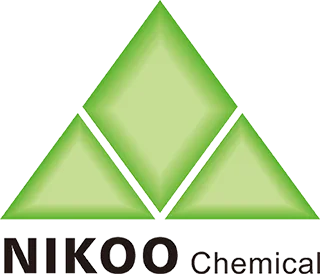How to Choose Emulsifiers for Lotion Making: A Step-by-Step Guide
1. Determine Your Lotion Type
Lotions are typically oil-in-water (O/W) emulsions (lightweight, hydrating) but can also be water-in-oil (W/O) (richer, occlusive).
-
O/W Lotions: Use high HLB emulsifiers (8–18).
-
W/O Lotions: Use low HLB emulsifiers (3–6).
Example: A lightweight daily moisturizer requires O/W emulsifiers like cetearyl alcohol (HLB 15.5) or polysorbate 80 (HLB 15).
2. Match Emulsifier Type to Your Formula
| Emulsifier Type | Best For | Examples |
|---|---|---|
| Synthetic | Cost-effective, high stability | Polysorbate 80, PEG-40 Hydrogenated Castor Oil |
| Natural | Clean/vegan formulations | Lecithin, Cetearyl Olivate, Beeswax |
| Co-emulsifiers | Boost stability and texture | Glyceryl Stearate + Cetearyl Alcohol |
3. Consider Ingredient Compatibility
-
Oils: Heavy oils (e.g., shea butter) need stronger emulsifiers (e.g., cetearyl glucoside).
-
Actives: Heat-sensitive ingredients (e.g., vitamin C) pair best with cold-process emulsifiers (e.g., beeswax).
-
pH: Avoid anionic emulsifiers (e.g., sodium stearoyl lactylate) in acidic formulas (<5.5).
Example: A lotion with niacinamide (pH-sensitive) benefits from nonionic emulsifiers like *polyglyceryl-4 oleate*.
4. Prioritize Safety and Skin Type
-
Sensitive Skin: Use gentle, nonionic emulsifiers (e.g., decyl glucoside).
-
Avoid Irritants: Steer clear of PEG-based emulsifiers (e.g., PEG-100 stearate) for reactive skin.
-
Natural Options: Lecithin and candelilla wax are hypoallergenic and biodegradable.
Study Insight: Lecithin-based emulsions show 30% lower irritation rates compared to synthetic alternatives in patch tests.
5. Optimize Texture and Stability
-
Lightweight Lotions: Use polysorbate 60 (HLB 14.9) for fluid, fast-absorbing textures.
-
Rich Creams: Combine beeswax (W/O) with cetearyl alcohol for a velvety finish.
-
Stability Boosters: Add 1–2% thickeners (e.g., xanthan gum) to prevent creaming.
Pro Tip: For O/W lotions, aim for droplet sizes <10 µm using high-shear homogenization (3000–5000 rpm).
6. Test and Validate
-
Stability Testing:
-
Thermal Cycling: Expose to 5°C and 40°C for 24-hour cycles.
-
Centrifugation: Spin at 5000 rpm for 15 mins to check phase separation.
-
-
Sensory Testing: Assess spreadability, absorption, and residue.
Example: A lotion with cetearyl olivate retained stability after 6 months at 25°C in a 2023 formulation study.
7. Cost and Availability
-
Budget-Friendly: Glyceryl stearate is affordable and widely available.
-
Premium Options: Sucrose esters offer superior texture but are costlier.
Quick Decision Checklist
-
Lotion Type: O/W or W/O?
-
HLB Match: Align with oil phase (e.g., HLB 12 for coconut oil).
-
Skin Safety: Nonionic > anionic for sensitive skin.
-
Natural vs. Synthetic: Align with brand ethos.
-
Stability Needs: Add thickeners or co-emulsifiers.
Best Emulsifiers for Common Lotion Types
| Lotion Type | Top Emulsifier Picks |
|---|---|
| Lightweight O/W | Polysorbate 80, Cetearyl Olivate |
| Rich W/O | Beeswax, Sorbitan Olivate (Span 60) |
| Sensitive Skin | Lecithin, Decyl Glucoside |
| Natural/Vegan | Xanthan Gum + Sucrose Esters |
Key Takeaways
-
HLB is King: Match emulsifier HLB to your oil phase.
-
Synergy Matters: Pair emulsifiers with thickeners (e.g., cetearyl alcohol + xanthan gum).
-
Test Rigorously: Stability under heat, cold, and mechanical stress is non-negotiable.
For example, a hydrating O/W lotion could use cetearyl olivate (HLB 11) + xanthan gum (0.5%) for a silky, stable formula. Always start with small batches to refine your emulsifier blend!

Phone: +86 20 36028881
Fax: +86 20 36550567
Email:rebecca@nikoochem.com
WhatsApp: +86 13822397763
Add: No 1718, Airport Rd., Yuncheng St., Baiyun Dist., Guangzhou City, Guangdong, China 510000
